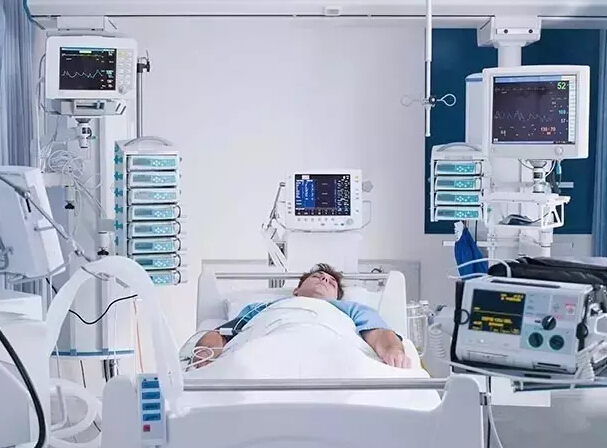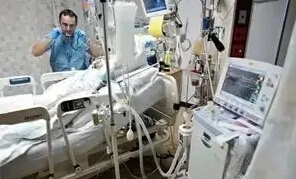Release date: 2017-04-05 Hospitals often have an unwritten expectation for their intensive care unit (ICU): reducing the incidence of “death in bedâ€. This kind of thought is a bit strange at first glance, but it can be understood. This expectation may be realized soon. Based on real-time data provided by various devices that monitor vital signs of patients, ICU seems to be the perfect use scenario for artificial intelligence tools, which can be used to determine the patient's real-time condition and when the condition may worsen. Priyanka Shah of the ECRI Institute said: "Many hospitals are interested in developing early warning systems to predict life-threatening events such as sepsis, cardiac arrest and respiratory arrest." The ECRI Institute is a medical assessment for the healthcare industry. Non-profit organization of procedures, equipment and drugs. Academic researchers and medical device companies are now trying to find out which combination of medical devices can provide the best measure of a patient's condition. Shah said that after solving this technical challenge, researchers must also demonstrate the "clinical significance" of the tool through experiments. In other words, not only to prove the effectiveness of the technology, but also to prove that the technology can be integrated into the hospital's workflow, saving hospitals. Among the ICU's intelligent tasks, the most difficult part is to persuade the medical industry to include relevant personnel, including FDA regulators, clinicians with stereotypes, and hospital administrators who want to save money. Because from a technical point of view, research in this area is promising. Life and death prediction in PICU The scenes in the Pediatric Intensive Care Unit (PICU) are always heartbreaking. In the neonatal ward, fragile newborns lie in plastic incubators surrounded by machines and screens. In the ward, the children were connected to the tube for intravenous injection, and their brave smiles matched the bright cartoon murals. At Los Angeles Children's Hospital, data scientists Melissa Aczon and David Ledbetter have proposed an artificial intelligence system that allows doctors to better understand which children's condition may worsen. Both Aczon and Ledbetter work in a hospital research department called Virtual PICU. Here, they work with clinicians who are eager to see improvements in their operations to develop this artificial intelligence system. Aczon said: "Their view is that in the ICU, contact between doctors and patients has been happening and data is generated. We have a moral responsibility to learn from these cases and to better learn from the experience we have learned. The patient down." They wanted to start with training an AI system that could make accurate predictions, so they designed an experimental system that predicted PICU mortality. They obtain vital signs from the hospital's electronic health record (usually measured every few minutes), existing laboratory tests, medication information, and treatment options. They used a health record of more than 12,000 patients in the PICU, and the machine learning program found the relevant patterns in the data and successfully identified the patient who was about to die. The program predicts a 93% accuracy rate of death, which is significantly better than the simple rating system currently used in hospital PICUs. Aczon and Ledbetter published papers on Arxiv and published their findings. The innovation of their experiments was the use of a machine learning method called the Recurrent Neural Network (RNN), which excels at processing continuous data sequences rather than directly drawing conclusions from data points at a certain point in time. “The RNN network is an effective way to process clinical data sequences,†Aczon said. “It integrates newly generated information sequences to get accurate output.†So in the program, the RNN network performs better because it can Over time, the most accurate predictions are made based on the patient's clinical data for the last 12 hours. Although the system is still in the experimental stage, Aczon and Ledbetter mentioned that such a tool would be of great use in the PICU. Of course, if the mortality prediction software is put into use in a hospital, the doctor will not be satisfied with just getting the patient's death risk score. “Risk assessment is only the first step,†says Ledbetter. “Once you know what the patient will do, you can think about how to intervene and prevent the patient from getting worse based on the patient's condition.†Preventing ICU crisis There are also specialized companies that are trying to use machine learning in the ICU. According to Wassim Haddad, co-founder of AreteX Systems, "Our mission is to reduce mortality by automating intensive care in the ICU unit." The company is about to change its name to AutoMedica, focusing on optimizing two important parts of ICU care. The mechanical ventilator manages the patient's breathing volume and manages the amount of real-time fluid injected intravenously. Haddad also mentioned that in the United States, 5.7 million people are admitted to the ICU every year, and 2.3 million of them need mechanical ventilators to help them breathe, but about 800,000 people here will encounter problems with ventilators being out of sync. "If they don't have enough calm, they tend to fight against the ventilator," Haddad explained. "If they want to inhale, but the machine says, no, you have to exhale. Such a contradiction can lead to extreme anxiety." AreteX engineers created a machine learning tool that identifies different types of respiratory synchronization based on patient ventilator data. This system is capable of sending an alert to a nurse or respiratory therapist, which can urgently enhance the patient's sedation and prevent the patient from confronting the ventilator. The company recently began clinical trials at the Northeast Georgia Medical Center to test the clinical performance of the system. The current solution is just the first step in completing the company's mission. "We hope that our technology is not just a clinical decision support for the current hospital," Haddad said. "It will be a fully automated system that can change the pacing of the ventilator in the future." However, in order to reach that stage, we A large number of clinical trials are needed to demonstrate the safety of the system to regulatory agencies and discreet hospital administrators. AreteX also has a similar program that monitors the amount of fluid that most ICU patients can receive by intravenous injection to increase blood volume and increase patient blood pressure. Haddad also said: "The current liquid management program is not efficient. Usually the doctor gives the nurse an order to manually change the injection rate. After a few hours, the doctor re-evaluates the patient to determine the amount of fluid to be injected." Yes, the ICU staff must carefully balance the amount of this fluid because the patient is susceptible to shock and is susceptible to serious complications due to too little or too much injection volume. The system developed by Haddad uses a machine learning method to measure the patient's sustained response to the amount of fluid being injected and to change the amount of injection over time to keep the patient's condition stable. AreteX is currently testing the fluid management system at the Northeast Georgia Medical Center. Haddad also said: "With the aging of the US population, emergency clinicians who can work in the emergency room and ICU are in short supply, and automation may be the only solution. Today, there are 3 million people over the age of 85, and will reach by 2030. 9 million, which will bring tremendous pressure to the national ICU." Source: Qubit HGH Products stands for recombinant human growth hormone. HGH is rich in protein, lecithin, cerebral phosphatide, amino acids, vitamins, trace elements, etc. The data show that the combination of these components, both in terms of composition and content proportion, is natural, scientific and reasonable. HGH can promote the synthesis of protein, collagen fibrin and elastin, as well as promote blood circulation and increase the content of nitrogen in cells. Which can promote the skin cells of newborn and split, accelerate wound healing, and at the same time again after renal sodium and water absorption, increase the subcutaneous tissue, the effect of the combination, make the skin more smooth, more flexible, and make them calm, small pore, and to promote the role of facial contour. HGH for sale,hgh side effects,hgh for women,hgh supplements Shaanxi YXchuang Biotechnology Co., Ltd , https://www.peptide-nootropics.com
In an ICU with multiple sensors, the artificial intelligence system can understand the life and death 
The respiratory therapist is breathing in a patient who is helping to use a mechanical ventilator